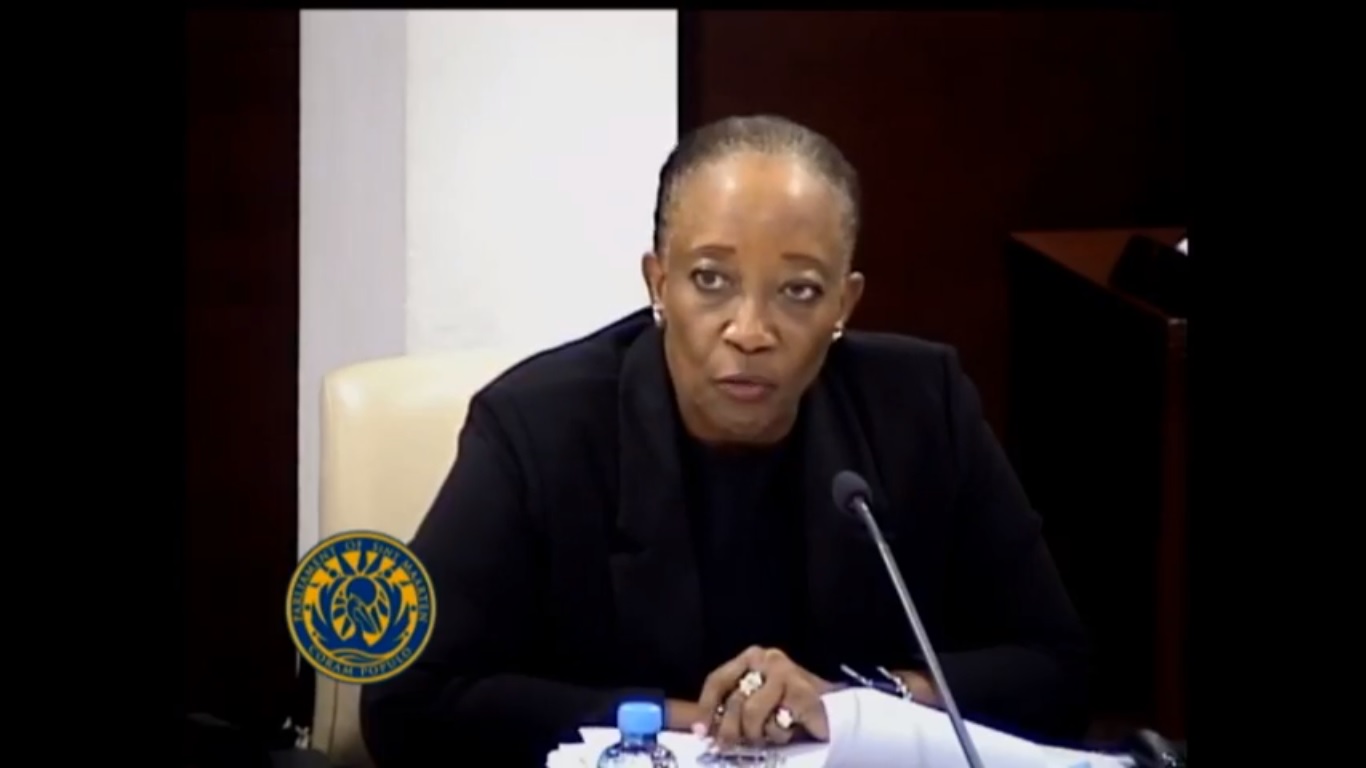Financial Intelligence Unit’s powers are regulated by law

PHILIPSBURG — In the first quarter of 2025 St. Maarten will be evaluated by the Caribbean Financial Action Task Force (CFATF). “We should have started with the preparations last year but unfortunately we have not managed to do that due to the pandemic,” says Ligia Stella, the director of St. Maarten’s Financial Intelligence Unit (FIU, often referred to by its Dutch acronym MOT in answer to questions posed to her via email by StMaartenNews.com.
Stella did not directly react to the suggestion that some consider that the powers that come with her position make her “the eighth minister with parliamentary powers.” Instead, the director referred to the relevant legislation. The national ordinance Meldpunt Ongebruikelijke Transacties was published in the National Gazette on August 2, 2019. The activities of the FIU are supported by the 40 recommendations against money laundering and the financing of terrorism formulated by the Financial Action Task Force (FATF). Recommendation 29 describes in the Interpretive Notes the main tasks of the FIU. The function and authorities of its director are regulated in the relevant national ordinance.
Stella says that St. Maarten must comply with all 40 recommendations in 2025. “There is a lot of work to be done. The FIU needs resources for this, as stipulated in the national ordinance and in FATF recommendation 29. St. Maarten runs the risk of getting a public statement again from the CFATF if those resources are not made available,” Stella says.
So what are the real powers attributed to the Financial Intelligence Unit? They are regulated in a national ordinance that got the green light from Parliament and is in line with recommendations from the Financial Action Task Force (FATF), the international alliance of 180 countries that sets the standards for the fight against money laundering and the financing of terrorism.

One of those recommendations is that the FIU has to be “operational independent and autonomous.” The ordinance states that the director executes tasks “independently and exclusively.” The organization is authorized to issue guidelines to the service providers that fall under the scope of its activities. It is also authorized to conduct investigations and to register and analyze data related to money laundering and the financing of terrorism. The FIU advises the Minister of justice and prepares relevant national ordinances. The director is accountable to the minister of justice. This sums up the FIU in a nutshell.
To get an idea of what the FIU is up to, we have to rely on its annual reports. The most recent report on the website dates back to 2015 but upon request the FIU provided more recent numbers.
Financial institutions like banks and a host of so-called designated non-financial businesses and professions (DNFBPs) are by law obliged to report unusual transactions within 24 hours to the FIU. Among the 147 entities that are subject to FIU-supervision were 75 jewelers and 37 real estate agents in 2015. These numbers are subject to change due to for instance the effect of natural disasters and economic developments.
There is a difference between unusual transactions and suspicious transactions. FIU-analysts receive unusual transactions reports, analyze these reports, and when a suspicion of money laundering or terrorism financing arises, submit the suspicious transactions to the Public Prosecutor’s office for further investigation.
The most recent annual report that has been published on the FIU-website still mentioned amounts linked to unusual transactions. This created confusion among laypeople and therefore the FIU has dropped these numbers from subsequent annual reports.
A transaction that meets the reporting indicators can be reported by two or more service providers. Purchases or sales of real estate are for instance reported by the real estate agent, the notary and the bank and in certain cases also by the attorney or the trust office (acting as the agent for the transaction). The total amounts therefore present a distorted picture and they will not be included from the 2016 annual report forward. It will be published on the FIU-website shortly.
But not all of those transactions are suspicious. In 2015, FIU-analysts found that of those 9.357 reports 717 were suspicious. That is a bit more than 7.5 percent of all transactions.
The FIU routinely reports all these suspicious transactions to the prosecutor’s office and that is where the story gets a bit weird. To get an inkling of what the prosecutor’s office does (or rather doesn’t) do with these transactions we have to go back to its 2014 annual report.
In that year, the FIU reported 844 suspicious transactions for further investigation but according to the annual report of the prosecutor’s office nothing was done with them: “An important bottleneck is that due to the lack of capacity insufficient action could be taken on the suspicious transactions reported by the FIU. None of the reports was taken under investigation. That is worrisome.”
A year later there is no information to be found about what the prosecutor’s office did with the 717 suspicious transaction-reports it received from the FIU. Instead, this report states that the FIU-reports have been discussed in the “financial experts group.” This is a gathering of representatives from the prosecutor’s office with financial investigators from the police force, the RST, the tax inspectorate and the national security service VDSM. Whether any of these reports gave reason for further investigation remains unclear.
In the meantime, more than five years have gone by and it is of course very well possible that the anti corruption task force TBO has taken the lead in doing something with the information the FIU provides on an annual basis.
Between 2015 and 2020 the number of unusual and suspicious transactions has increased dramatically. The increase for unusual transactions was 162.1 percent for a total of 24,526. The number of suspicious transactions (2015-2020) increased from 717 to 1,831 (155.4 percent).
The FIU has in the meantime solid indicators for where financial investigators have to look for money laundering activities. During the past four years (2017-2020) suspicious transactions were related to participation in a criminal organization, human trafficking, human smuggling, murder and grievous bodily harm, the drugs trade, tax crimes, corruption and bribery, sexual exploitation and theft.
Three quarters of all unusual transactions are reported by banks. In 2015 that amounted to 5,623 reports with a value of 1.6 billion guilders (close to $894 million). Among the DNFBPs trust companies led the way with 72 reports (worth 3 million guilders or $1.68 million), followed at a distance by car dealers (332,000 guilders – $185,475) and casino’s (316,000 guilders – $176,536) with six reports each.
The Customs department reported 207 cases of travelers with more than 20,000 guilders in their possession. The total value of these reports was 1,469,647,900 guilders (more than 1.4 billion or over $820.7 million) – an average of more than 7 million guilders ($3.9 million) per report. That seems rather astonishing but FIU-director Stella notes that this includes money transports to Saba, Statia and the other Caribbean countries by banks and money remitters.
Money remitters also play a role in this field. They reported to the FIU the use of laymen, the transfer of funds to high risk jurisdictions, refusal to declare the origin of funds and disparities between the amount of a money transfer and a client’s occupation.


























